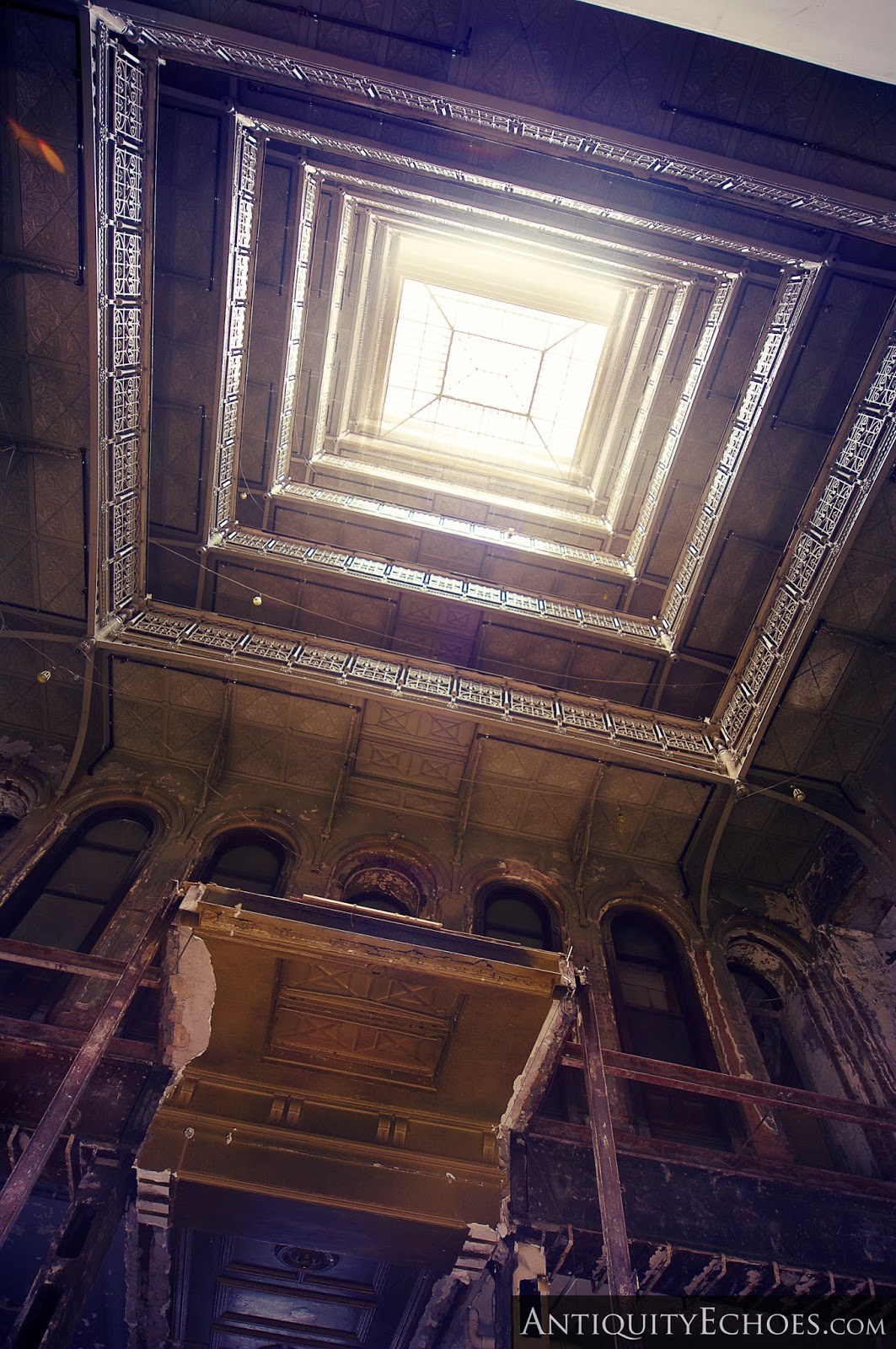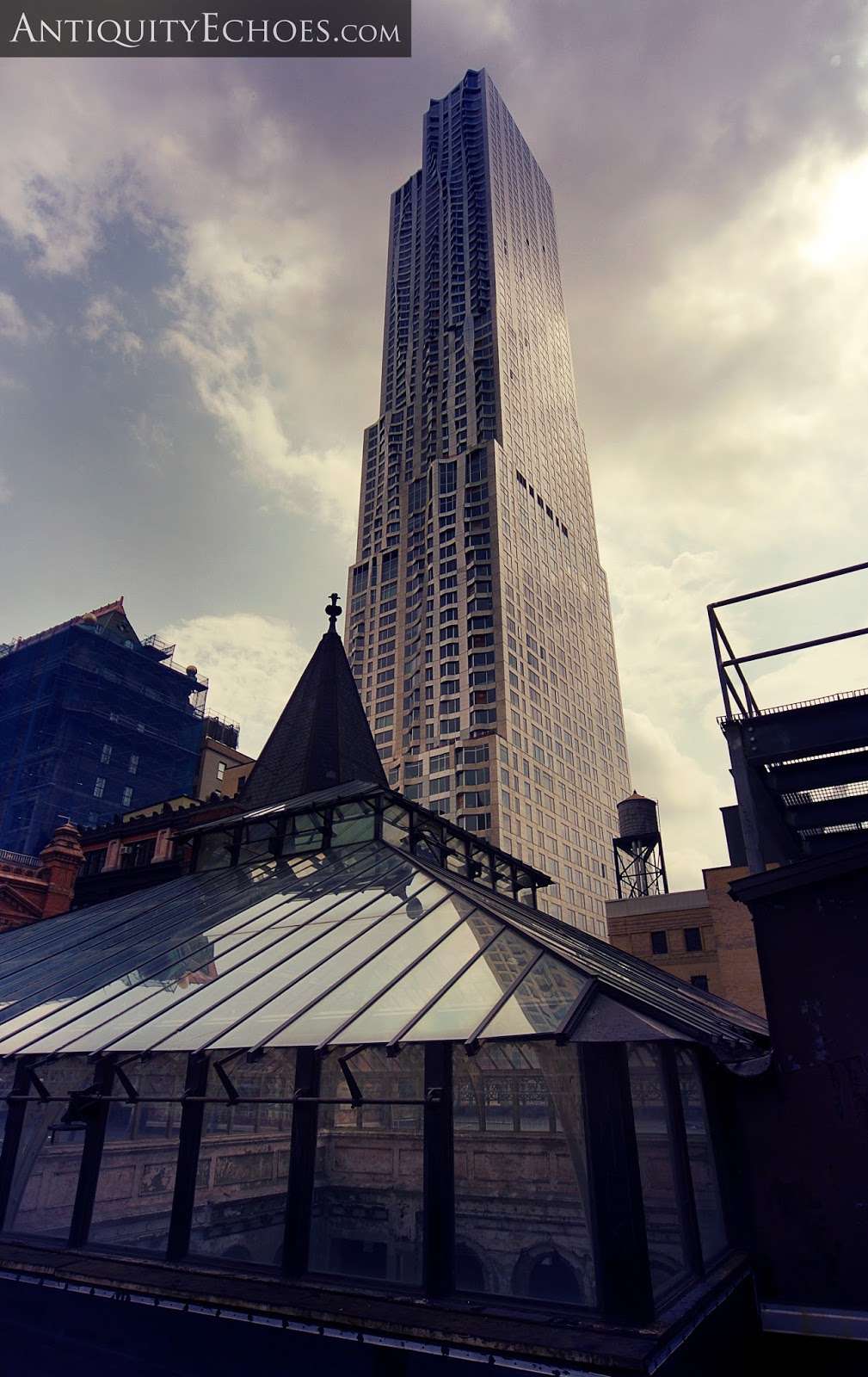Temple Court (AKA The Beekman Palace)
New York City is a place where visitors
tend to wander the streets looking skyward. It's an almost
involuntary reflex, especially for those who do not frequent
Manhattan on a regular basis. This is understandable though, as the
skyline here is unlike anything else on earth, and exudes an almost
physically force that pulls one's eyes upward, toward towers of
glistening steel and grey stone. This feeling of awe is eventually
dulled through time though... and the spectacle of New York
architecture becomes but a distant memory to those who dwell or do
business within it's boundaries. However, behind the closed and
chained doors of the Temple Court building can be found a sight that
would pull even a veteran urbanite's gaze skyward.
In the center of this otherwise plain
lobby lies perhaps the most beautiful atrium in the whole of the
city. The amazing design work found herein allows one standing in the
ground-floor lobby a clear view of the sky through over nine floors
of building. For decades it was sealed away from view, obscured behind walls of wood
and concrete when it was deemed in violation of city fire code in the
1940's. Once hidden, recollections of its beauty slipped away from the collective consciousness of
the city, and was eventually all but forgotten. Tenants moving into
the office building after the entombment of the atrium would never
even be aware of its existence. In place of an ornate open-air lobby,
people working here saw only walls.
The Temple Court building itself has a
long-standing history as a part of the New York skyline. Not only was
it one of the original tall “fireproof” office buildings in New
York City, it is now the earliest surviving one. It harkens back to
the days of old New York, an era before the development of looming
skyscrapers. Temple Court has remained essentially the same since
it's construction well over a century ago. Aside from minor upgrades,
it looks nearly identical today as it did upon opening. The
building's trademark peaked towers are part of the original design,
and hint at an architectural trend of pyramidal forms that later
became popular in the modern skyscrapers that now loom high over the
building.
We, along with a small group of
like-minded photographers, were granted access to the property to
document things before any heavy renovations begin to take place.
Unlike most of our work, this building is not truly an 'abandoned'
place, simply a forgotten one. Being the third building in all of
the city to have an elevator installed, we were quite excited to find
it was still in operating condition on the day we were there filming.
Running up and down nine flights of stairs, no matter how ornate and
beautiful, was not an aspect of our trip which we were overly
ecstatic about. The redevelopment of Temple Court culminated in 2016 with the opening of the Beekman, which
transformed this old office building into a grand hotel of some 180
rooms.

View from the lobby.
This image from the New York Times shows the lobby sealed away in 1998.
The stairwells are all ornately detailed in metalwork.
This 1998 image, also from the New York Times, shows the atrium entombed behind plywood and sheet rock.
View of One World Trade Center, in mid-construction.
The iron supports that line the ceiling are highly detailed dragon sculptures.

This is an older video of ours. When watching, you may notice that it has a different "feel" to it than our current-day films. This is because the style of our cinematography has progressed over time, and our equipment has changed and improved throughout the years. We have chosen to leave our older videos available for viewing online to illustrate the evolution of our work.


























